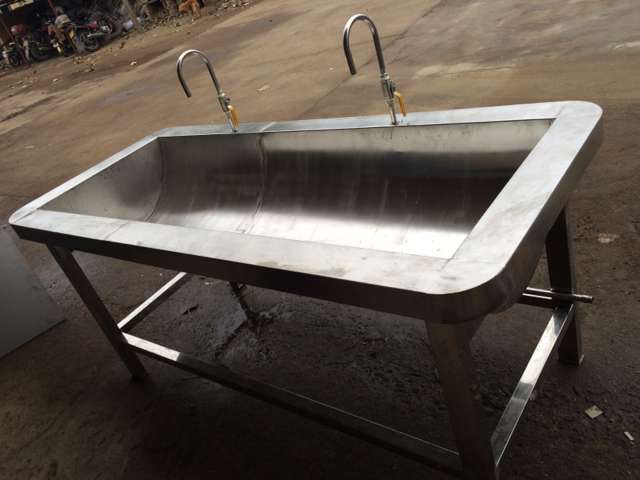Feed Pellet Production Equipment for Efficient Animal Nutrition Solutions
Nov . 17, 2024 09:30 Back to list
Feed Pellet Production Equipment for Efficient Animal Nutrition Solutions
Understanding Feed Pellet Machines A Comprehensive Overview
Feed pellet machines are essential devices in the agricultural sector, especially for livestock and poultry farmers. These machines convert raw materials such as grains, vegetables, and feed additives into pellets that provide balanced nutrition for animals. In this article, we will explore the purpose, benefits, working principles, and important considerations regarding feed pellet machines.
Purpose of Feed Pellet Machines
The primary purpose of feed pellet machines is to produce high-quality animal feed that is easy to handle, transport, and store. Unlike traditional feed, which may be loose and bulky, pellets are compact and convenient. This transformation enhances the palatability and digestibility of the feed, allowing animals to consume more nutrients efficiently. Consequently, farmers can optimize their feeding strategies, leading to healthier livestock and improved productivity.
Benefits of Using Feed Pellet Machines
1. Nutritional Efficiency Pelleting the feed reduces the presence of dust and wastage, which often occurs with loose feed. It ensures that animals consume all the necessary nutrients without selective feeding behaviors.
2. Improved Digestibility The pelleting process generally includes steam treatment, which gelatinizes starches and breaks down fibrous materials. This enhances the digestibility of the feed and improves overall animal health.
3. Better Feed Preservation Pellets tend to have a longer shelf life than bulk feed due to reduced moisture content and fewer mold concerns. This advantage allows farmers to store feed for extended periods without significant quality loss.
4. Cost-Efficient By producing feed pellets in-house, farmers can significantly reduce feed costs. They can utilize locally sourced raw materials, thus lowering transportation expenses and ensuring a fresh supply of nutrients.
5. Reduced Feed Waste Animals tend to waste less pelletized feed compared to loose feed. This can translate to lower overall feed costs, as more of the feed provided is consumed.
6. Enhanced Animal Health Consistent and nutritionally balanced pellets contribute to improved growth rates, reproduction, and overall animal health. Healthy animals also reduce the chances of disease outbreaks, which can be costly for farmers.
Working Principles of Feed Pellet Machines
Feed pellet machines operate on a straightforward principle they compress raw feed ingredients into dense pellets. The process generally involves several key stages
feed pellet machines

1. Grinding The raw materials are first chipped, ground, or crushed into a fine powder. This step ensures a consistent feed texture, which is vital for effective pelleting.
2. Mixing After grinding, the feed ingredients are mixed thoroughly, often with the addition of moisture or steam. This mixture is ready for pelleting.
3. Pelleting The prepared feed mixture is then fed into the pellet mill, where it is subjected to heat and pressure. The machine forces the mixture through die holes, shaping it into pellets as it cools down.
4. Cooling and Drying Once formed, the pellets are cooled and dried to remove any excess moisture. This step is critical in enhancing the shelf life of the feed.
5. Packaging Finally, the cooled pellets are packaged for storage or transportation, ensuring they remain in optimal condition for feeding.
Considerations When Choosing a Feed Pellet Machine
When selecting a feed pellet machine, farmers should consider several factors
1. Production Capacity Machines come in various sizes and capacities. It is important to choose a model that matches the scale of your farming operations to avoid bottlenecks or overspending.
2. Material Compatibility Ensure that the machine can handle the specific raw materials you plan to use, including grains, additives, and other components.
3. Energy Efficiency Given the operational costs, selecting an energy-efficient machine can significantly reduce long-term expenses.
4. Maintenance Requirements Regular maintenance is crucial for the longevity and efficiency of the machine. Consider the ease of access to spare parts and the availability of service support.
5. Budget Evaluate the initial investment against the projected returns, including potential savings from reduced feed costs.
In conclusion, feed pellet machines play a vital role in modern animal husbandry, contributing to improved feed efficiency, animal health, and overall productivity. By understanding their benefits, operational principles, and considerations for selection, farmers can make informed decisions that enhance their agricultural practices and bolster their financial sustainability.
-
High Performance Exhaust Fan – Efficient Ventilation Solutions for Home
NewsJun.10,2025
-
High-Quality Gestation Pen for Sows Durable Mobile Pig Pen & Simple Pig Pen Solutions
NewsJun.10,2025
-
High Quality Rabbit Cage Double Tier Designs & Welded Wire Mesh Supplier
NewsJun.10,2025
-
Floating Fish Feed Machine - High Efficiency Floating Fish Feed Extruder for Small Scale Production
NewsJun.10,2025
-
Premium Poultry Housing Solutions Mobile & Commercial Free Range Options
NewsJun.10,2025
-
Industrial FRP Fans Corrosion-Resistant Blades & Centrifugal Systems
NewsJun.09,2025






